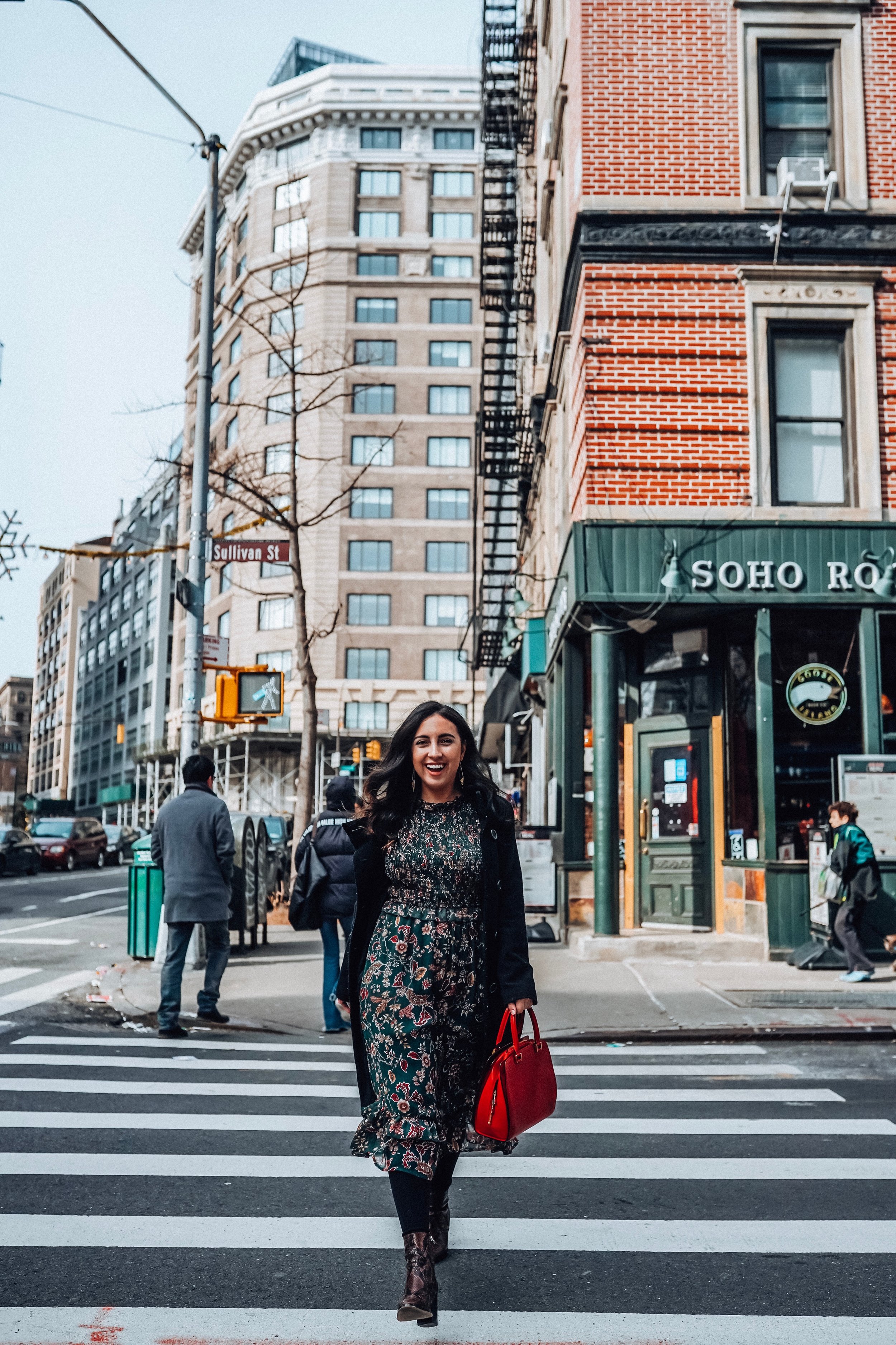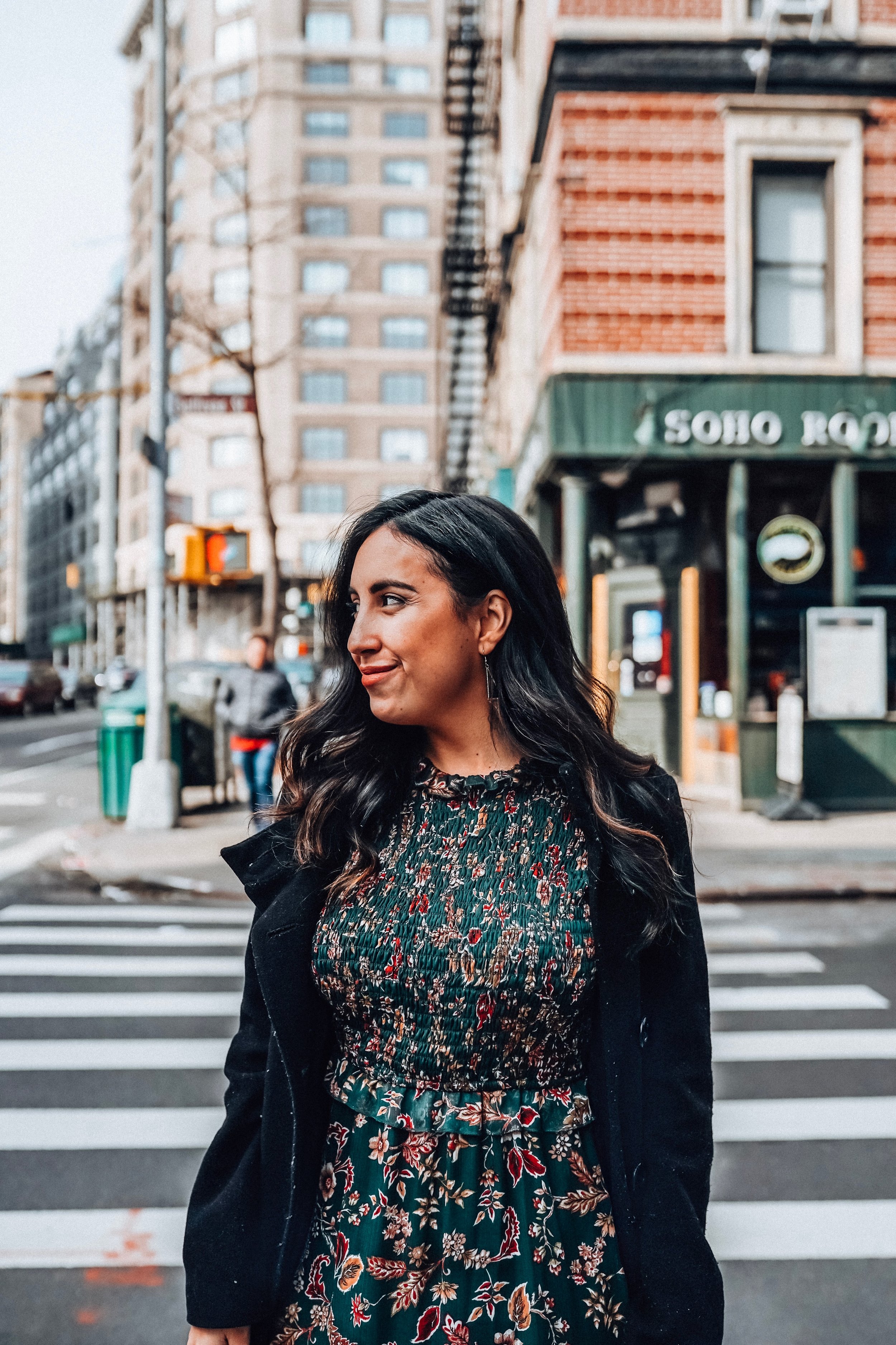So, You Want to Be an Influencer? Here’s the 101 guide
Originally published February 2019, revised May 2020.
One of the biggest questions I get throughout the day is "help me become an influencer!" Whether sarcasm, reality, or just someone having a bad day in their 9 to 5 looking for a creative outlet, influencer marketing is a hot career choice these days.
Oh, and I said career because to truly be successful in this space you need the same time, energy and effort you would put into your 9 to 5.
But, that's a topic for another day.
Similar to how there's no one hack or trick to becoming an accountant, photographer, doctor, writer, etc., sorry to tell you that there isn't a magical solution. However, I've had the unique opportunity to work the ~influencer~ space from both the brand and content creator side and have picked up a pretty close-to-accurate guide to building your personal online presence. After all, that's what becoming a marketable millennial is all about.
Before we dig into the details, let's talk about what it truly means to be an influencer. It doesn't necessarily mean the numbers you have on your profile as followers, it's truly about to what extent you are able to influence the opinions or behaviors of a consumer set. In fact, it doesn't even mean you have to convert each follower or viewer into a sale; if you've built a strong community of people who you incite curiosity toward and build a conversation around, I'd say you're pretty darn successful. Even experts like AdWeek are fighting for Micro-Influencers' ability to provide a stronger ROI (that's return-on-investment) despite their smaller audience.
This post leans with a focus on Instagram Influencers as it's got some of the highest active users today, and ist still one of the most highly sought after platforms for brands to create sponsored content on (YouTube is a close second and TikTok is making its way to the top).
At this point I know what you're thinking: alright, LC, stop blabbering and show me how to get IG famous! Here are the 5 steps to becoming an Influencer:
1. Find Your Niche
One of the most important steps toward becoming an influencer is deciding what you'll want to influence about. These days it's not enough to be a "blogger” and even categories like fashion and lifestyle have become overly saturated and highly competitive. In order to build a strong online brand, you have to find a way to stand out.
Start by finding the things you're already doing. Do you travel a lot, are you money savvy, do you love thrift shopping, are you in an interesting profession that could use more visibility? Start big and then start to narrow in on something that will truly make you unique. For example, if you love cooking but don't want to fall into the sea of sameness that is #foodie find something that makes YOUR cooking interesting and different. Let's say you're actually in your late 20s, work that 9 to 5 and are actually not the greatest at cooking but find a way to save money, make quick meals and nourish yourself along the way. The busy girl's hack to cooking? That's a channel I sure will follow.
2. Build a Cohesive Profile
You know what you want to focus on, it's time to start the rebranding. Take some time to truly work this part out with yourself to build a cohesive profile and message that will carry across all the content and conversations you'll have in the future. What is it that you truly stand for? What value will you provide followers? And what are you the expert in? All this should be reflected from bio to the story you post at 2 a.m. on a Saturday night.
One of the simplest formulas to creating a bio is the power statement + content buckets + location + contact + link call-to-action Everything past that is really up to your personal taste and needs, but those are your primary colors…for lack of a better term.
This power statement is a one-liner that defines what your platform is about. Short and sweet works best. What are people here for? What is your channel here to accomplish? What problem do you solve? Who are you and what’s your purpose?
Your content buckets will help add clarity at-a-glance when someone discovers your page and will help with community building over time. Outside of the straightforward “what is your content about” question (Ex: Travel, Style, Beauty, Business), maybe you’d like to add your profession (Ex: Strategist @Company), hashtags you created for your community (Ex: #CreateWithMeChallenge), or anything to your identity you want people to know (Ex: Latina).
Note: this can really help you with brand partnerships as brands are often looking for creators through keywords like this
Your location helps brands know where you are so that you can more immediately be a fit (or not) for their campaigns. It also helps your audience understand if you're within their IRL community. Use that pin emoji!
These days I recommend you put your e-mail in bio as brands looking for influencers on desktop computers will be able to contact you faster than pulling out their phone to click that “contact” button. And many don’t even have the mail app to do so.
Note: if you want to save precious real estate, use the e-mail emoji and say “below” — ideally leading them to your website where you should then ensure there is a clear way to contact you via your website
A sure way to guarantee people actually click on your #linkinbio is with a call-to-action. What am I about to click on? A resource? Latest blog post? Event tickets? Etc.
BONUS: Make your account a creator profile. It helps you understand your analytics and channel performance, which is also important if you want to work with brands in the future as they will require you to submit this.
3. Create Meaningful, Quality Content
There's no way around this one. If you want people to stop by your profile you have to provide content that is worth stopping for. This doesn't mean you need to dish out thousands of dollars on equipment - smartphones will do just fine as a starter - but content is king. On the brand side, there are many times where we have decided on someone with "fewer followers" because their content was so much more carefully thought out and valuable. We knew this meant they likely had more engaged audiences, and they had really great photos that we'd be able to reuse and repost on our brand feeds.
When you're starting out, you can buy a tripod. or ask friends to help take content for you via your personal phone. Then get comfortable with apps that will enhance photos (I live by Adobe LightRoom or Snapseed for those looking for free, or the Tezza App). It’s not really about “the perfect picture” these days, but social media is very visual so you want to make sure you create some consistent “look and feel” to what you are creating or saying.
When taking photos, one big tip I learned from one of my favorite content creators (@tezza) is to find props to help enhance the activity going on in your photo and to get you out of your comfort zone. And keep an eye for what performs best for your category. For example, if your niche involves a lot of demonstration then you might want to get into short-form video over photography.
IMPORTANT: Build a nice set of content before working on channel growth strategies. There's nothing worse than working hard to build up your following and then having this new audience sitting and waiting weeks for content. Have it ready to go from the start!
4. Engage, Engage, Engage
Engagement over eyeballs is the name of the game. And we’re not just talking about your engagement rate, but how ACTIVE is your COMMUNITY with the content you are sharing? The reason is, engagement tells us how much of your audience is truly active and interested in what you’re posting and helps filter through creators who don’t have a genuine following or true community. Improving your engagement also helps you get discovered by other accounts and show up as “recommended” among the groups you’re active within.
Some quick things to start improving engagement:
Follow your niche or category’s hashtags and stay active within those communities and posts.
Stop and comment on everyone that shows up in your news feed. After all, you follow them because you like who they are and what they post so give them some love. Keep it authentic and meaningful (read the dang caption) and it will help you build relationships over time.
Go on what I call “comment thread journeys" where you find someone within your category, engage, then find someone similar within the comment thread, visit that page and engage, find someone similar within that person’s comment thread, etc.
Make sure all your captions have a call-to-action (CTA) because it increases the chance of someone commenting and getting active within your thread.
Always, comment back! This literally is the easiest way to DOUBLE your engagement and ensure it’s truly a two-way conversation.
CAUTION: Engagement pods, comment groups, etc. can surely help you get quick numbers, but brands are catching on to this and considering it a negative as it’s not truly genuine engagement and mostly forced. Be careful how you use these groups and find ones that truly offer networking and support, not people who will comment on a photo of your morning breakfast with “looking cute” / “love it babe” / “xoxo.”
5. Network and Grow!
So, you’ve done all the above? Your existing audience and community are feeling the love? Then you’ve set yourself up for success. Consistency is key from here on out and while growth strategies are a big conversation for another time (come on, I couldn’t reveal my entire e-book in one go) I’ll leave you with a preview. These days, elements of growth involve strategic partnerships that expose you to new audiences and networking within your category to help yourself and other fellow creators.
Some great ways to network are attending events — from something brand-specific to conferences; co-creating content with fellow influencers just-for-fun and for the love of creativity; and building relationships offline to build the support system you need to grow your digital career and enjoy the benefits of all the internet has to offer.
& then comes the brand partnerships
Before you start getting paid to create content on social media, you’ve truly got to set the foundation. With all the above complete, it will be easier to then pitch yourself to brands and stand out within influencer networks like these.






